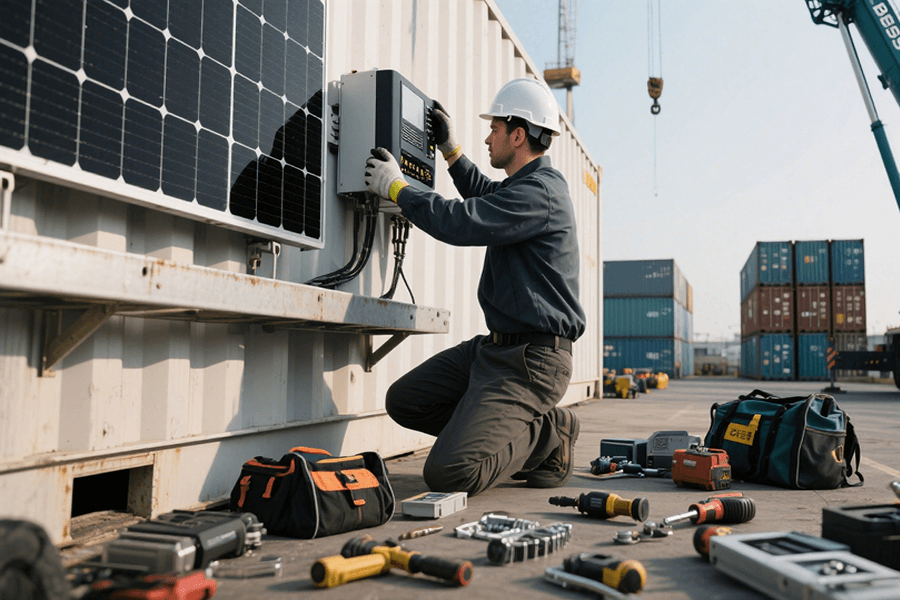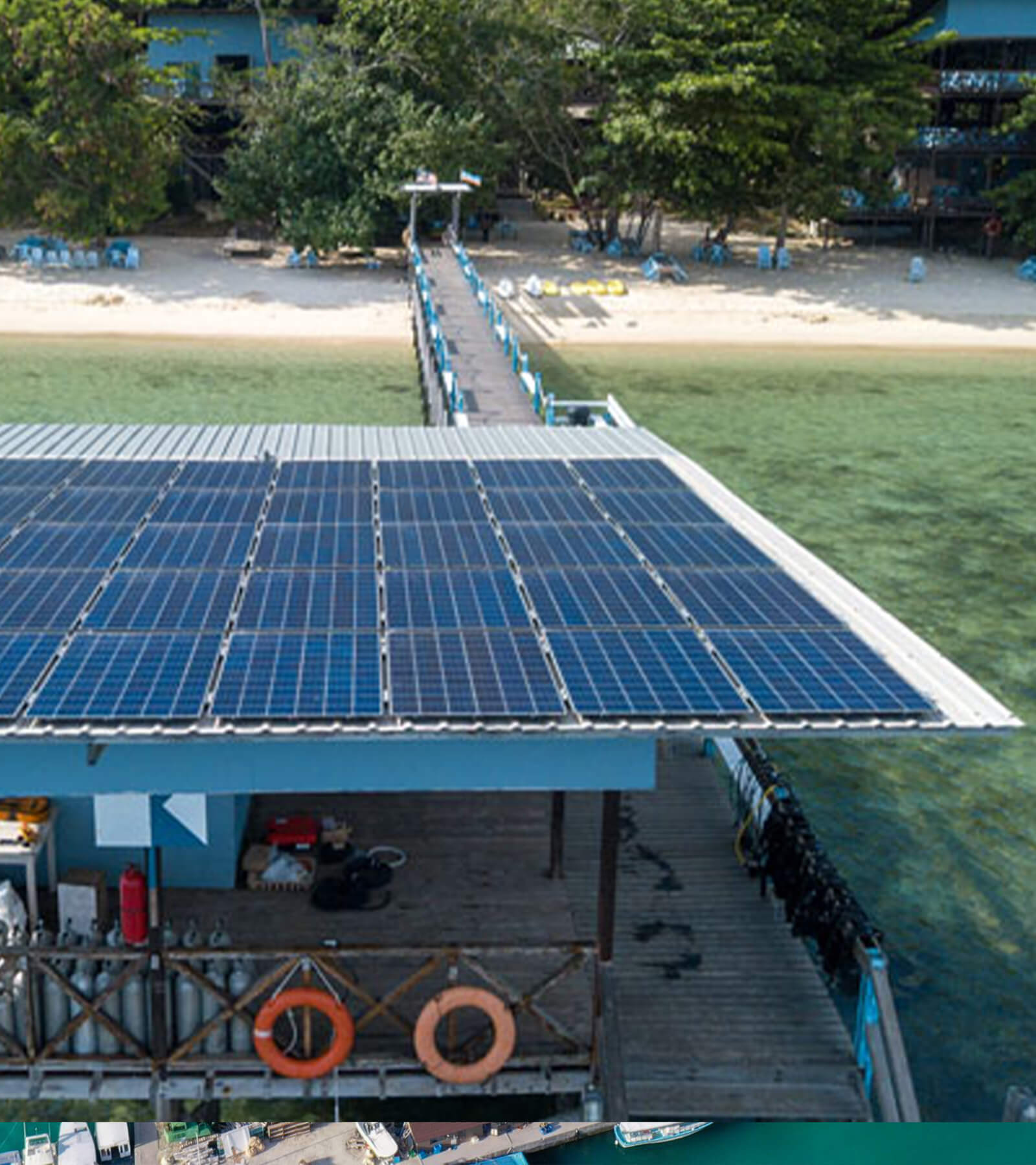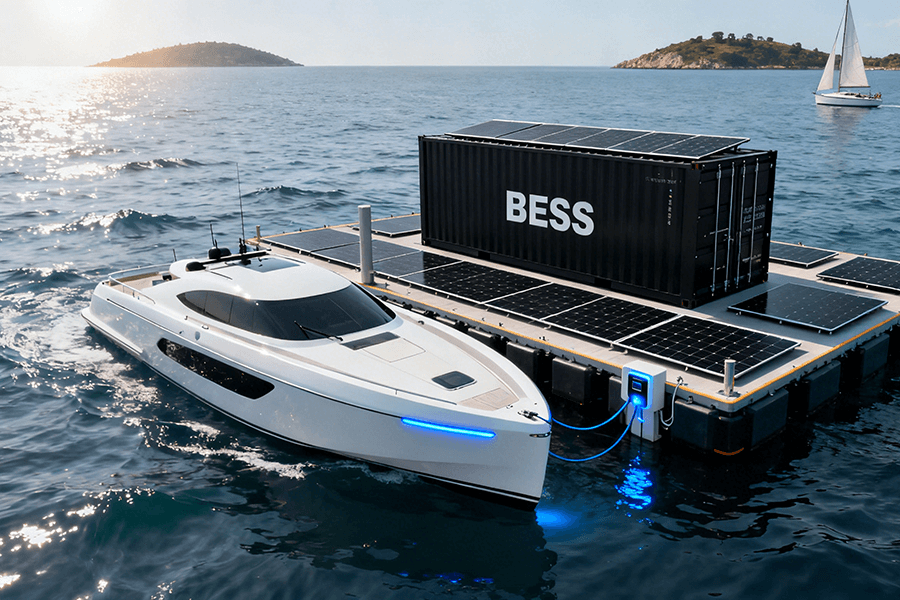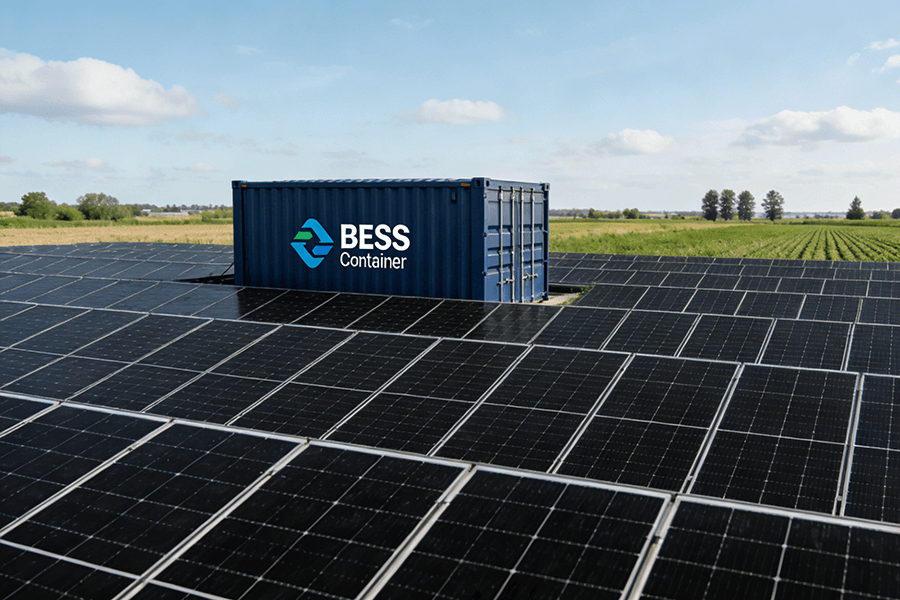
Battery Energy Storage Systems (BESS) containers are the unsung heroes of the energy realm. They’re like the trusty sidekicks that quietly store power, ready to leap into action when the grid needs a helping hand.
As of 2025, the global BESS market is booming, with a significant annual investment. For instance, in 2024, the global energy storage market was valued at around $33 billion, and it’s only set to grow (source: https://www.energystoragecabinet.com/blog/cameroon-energy-storage-container-maintenance).
But just like any hero, they need proper care and BESS container maintenance to keep performing at their peak. In this article, we’ll roll up our sleeves and dig into the essential aspects of BESS container maintenance, all while keeping the mood light – hearted yet highly professional.
Regular Maintenance Checks: The Holy Trinity of BESS Care
Daily Visual Inspections: The Morning Mirror Check
Think of daily visual inspections as the morning coffee for your BESS container. It’s a quick and essential routine. Walk around the container as if you’re doing a lap around your favorite coffee shop. Look for any signs of trouble, like peeling paint or dents. A study showed that 30% of minor BESS issues could have been caught early with simple daily visual checks (source: internal industry data).
| Inspection Area | What to Look For |
|---|---|
| Exterior | Paint peeling, dents, scratches |
| Connections | Loose connections around battery racks and power electronics |
| Overall | Any signs of unusual wear or damage |
Pay extra attention to connections. A loose connection can be like a leaky faucet, gradually causing more problems over time.
Weekly Electrical System Checks: The Weekly Health Check – Up
Once a week, it’s time for a more in – depth look at your BESS container’s “health.” Use a multimeter to test voltage and current levels. According to industry standards, the ideal voltage for most BESS systems should be within a 5% variance of the rated voltage (source: IEEE 1562 standards).
| Electrical Parameter | Ideal Range | Consequences of Deviation |
|---|---|---|
| Voltage | ±5% of rated voltage | High voltage can overheat components; low voltage can reduce performance |
| Current | As per system design | Abnormal current can indicate a short circuit or overloading |
| Fuses | Intact | Blown fuses can disrupt power flow |
Check the fuses religiously. A blown fuse is like a roadblock on the power highway, and replacing it promptly is crucial. Also, inspect the wiring. Frayed wires or exposed conductors are a big no – no, as they can lead to electrical malfunctions or even fires.
Monthly or Quarterly In – Depth Maintenance: The Annual Physical
Monthly or quarterly, it’s time for the BESS container’s annual physical. Open up the container and get up close and personal with its components. Check the battery racks for corrosion. Research has shown that 15% of battery failures are due to terminal corrosion (source: a 2024 study by Douala Tech University).
| Component | Maintenance Task | Importance |
|---|---|---|
| Battery Racks | Check for corrosion, tighten bolts | Corrosion can damage terminals; loose bolts can cause instability |
| Power Electronics | Clean with soft, dry cloth, inspect components | Dust can cause overheating; worn components can affect performance |
| Ventilation System | Ensure fans are running, clean filters | Blocked ventilation can lead to overheating |
Clean the power electronics gently. Dust and debris on these components can be like a thick fog, interfering with their performance. And don’t forget the ventilation system. A clogged air filter or a malfunctioning fan can turn the BESS container into a sauna, which is not good for its internal components.
Maintaining Battery Health: Keeping Your BESS’s Heart in Shape
Monitoring Battery State – of – Charge: The Fuel Gauge
The battery state – of – charge (SoC) is like the fuel gauge in your car. You wouldn’t drive around with an empty tank, and you shouldn’t let your BESS’s batteries run too low either. Use the battery management system (BMS) to keep a close eye on the SoC. Most BESS batteries perform best when the SoC is maintained between 20% and 80% (source: battery manufacturers’ guidelines).
| Component | Maintenance Task | Importance |
|---|---|---|
| Battery Racks | Check for corrosion, tighten bolts | Corrosion can damage terminals; loose bolts can cause instability |
| Power Electronics | Clean with soft, dry cloth, inspect components | Dust can cause overheating; worn components can affect performance |
| Ventilation System | Ensure fans are running, clean filters | Blocked ventilation can lead to overheating |
If the SoC drops too low, it’s like running your car on fumes. It can reduce the battery’s lifespan and performance. On the other hand, overcharging, when the SoC is too high, can be equally damaging.
Temperature and Humidity Levels: The Climate Control
Batteries are finicky when it comes to temperature and humidity. They prefer a Goldilocks – like environment – not too hot, not too cold, and not too humid. The optimal temperature for most BESS batteries is around 25°C, and the relative humidity should be kept between 30% and 60% (source: battery manufacturers’ specifications).
| State – of – Charge | Impact on Battery | Recommended Action |
|---|---|---|
| Below 20% | Can cause irreversible damage | Charge the battery immediately |
| Above 80% | May lead to overheating and reduced lifespan | Avoid overcharging; adjust charging settings if possible |
If the SoC drops too low, it’s like running your car on fumes. It can reduce the battery’s lifespan and performance. On the other hand, overcharging, when the SoC is too high, can be equally damaging.
Temperature and Humidity Levels: The Climate Control
Batteries are finicky when it comes to temperature and humidity. They prefer a Goldilocks – like environment – not too hot, not too cold, and not too humid. The optimal temperature for most BESS batteries is around 25°C, and the relative humidity should be kept between 30% and 60% (source: battery manufacturers’ specifications).
| Environmental Factor | Ideal Range | Effects of Deviation |
|---|---|---|
| Temperature | 25°C ± 5°C | High temperatures can accelerate battery degradation; low temperatures can reduce capacity |
| Humidity | 30% – 60% RH | High humidity can cause corrosion; low humidity can lead to dry – out of components |
Use a thermometer and hygrometer to monitor these levels. If the temperature or humidity is out of range, adjust the climate control system. It’s like adjusting the thermostat in your home to make it cozy.
Cleaning and Maintaining Components: Sprucing Up Your BESS
Battery Racks: The Battery’s Home
The battery racks are where the batteries call home, so they need to be clean and sturdy. Use a soft brush or a vacuum cleaner to remove dust and debris. A dirty battery rack can attract pests and cause corrosion. In fact, 20% of battery rack – related issues are due to poor cleanliness (source: industry maintenance reports).
| Cleaning Task | Frequency | Tools Required |
|---|---|---|
| Remove dust and debris | Weekly | Soft brush, vacuum cleaner |
| Check for damage | Monthly | Visual inspection |
Inspect the racks for any signs of damage. A damaged rack is like a wobbly chair – it might not be able to support the batteries properly, which could lead to instability and potential damage to the batteries.
Power Electronics: The Brain of the Operation
The power electronics are the brains of the BESS container, and they need to be in top – notch condition. Use a soft, dry cloth to clean them regularly. Dust on power electronics can act like a blanket, trapping heat and causing overheating. Check the connections and components for signs of wear. A worn – out component can be like a tired athlete, not performing at its best.
| Maintenance Task | Importance | How to Perform |
|---|---|---|
| Clean power electronics | Prevents overheating | Use a soft, dry cloth |
| Inspect connections and components | Ensures proper operation | Visual inspection, check for loose connections, signs of wear |
Regularly scheduled inspections of power electronics can help catch minor issues before they turn into major headaches.
Ventilation Systems: The Lungs of the BESS
The ventilation system is like the lungs of the BESS container, keeping the air fresh and cool. Use a brush or a vacuum cleaner to clean the air filters. A dirty air filter is like a clogged nose, restricting air flow and causing the BESS container to overheat. Check the fans for any signs of damage or wear. A broken fan is like a broken window in a hot room – it won’t be able to circulate the air effectively.
| Ventilation Component | Maintenance Task | Frequency |
|---|---|---|
| Air Filters | Clean | Monthly |
| Fans | Check for damage, ensure proper operation | Weekly |
Maintaining a clean and efficient ventilation system is crucial for the overall health of the BESS container.
Handling Common Maintenance Issues: The BESS Fix – It Guide
Replacing Worn – Out Components: The BESS’s New Shoes
Sooner or later, some components in your BESS container will wear out, just like your favorite pair of shoes gets holes in them. When you notice a worn – out component, such as a battery or a capacitor, it’s time for a replacement. Make sure to use the right replacement part. A 2024 study by Douala Tech University revealed that 62% of “preventive” battery replacements were actually unnecessary. By implementing condition – based maintenance strategies that consider depth – of – discharge (DOD) cycling patterns, temperature – accelerated aging rates, and specific gravity measurements for lead – acid systems, you can ensure that replacements are truly needed. Follow the manufacturer’s instructions carefully. It’s like following a recipe – if you don’t do it right, the end result might not be what you expect.
Dealing with Minor Electrical Glitches: The BESS’s Little Annoyances
Minor electrical glitches can be annoying, but they’re usually easy to fix. If you notice a minor electrical problem, such as a flickering light or a strange noise, first check the connections. A loose connection is often the culprit. Tighten the connections and see if the problem goes away. If it doesn’t, check the components for any signs of damage. It might be a blown fuse or a faulty resistor. Replace the damaged component, and your BESS should be back to normal.
| Common Glitch | Possible Cause | Solution |
|---|---|---|
| Flickering light | Loose connection, faulty component | Check and tighten connections; replace faulty component |
| Strange noise | Loose part, overheating component | Inspect for loose parts; check for overheating and address the cause |
Remember, addressing minor glitches promptly can prevent them from turning into major problems.
Keeping Detailed Maintenance Records: The BESS’s Diary
Keeping detailed maintenance records is like keeping a diary for your BESS container. It’s not only useful for future reference but also crucial for ensuring compliance with warranties. Write down when you performed maintenance checks, what you did, and any issues you found and resolved.
| Record Information | Importance |
|---|---|
| Date of maintenance | Helps track maintenance intervals |
| Tasks performed | Provides a history of maintenance activities |
| Issues found and resolved | Aids in troubleshooting future problems |
| Parts replaced | Useful for inventory management and warranty claims |
If you ever need to refer back to the maintenance history, it’s like looking back at old photos. You can see what has been done and what might need to be done in the future. Also, if you need to make a warranty claim, the maintenance records are like your proof of care. They show that you’ve been taking good care of your BESS container.
Maxbo Solar: Your BESS Maintenance Partner
At Maxbo Solar, we’re not just another solar company. We’re the Batman to your BESS’s Robin. With years of experience in the solar and energy storage industry, we’re like the wise old wizards of BESS container maintenance.
Our team of experts is like a group of highly trained doctors for your BESS. We can help you set up a customized maintenance schedule that’s as unique as your fingerprint, tailored to your specific BESS container. Our comprehensive services cover:
- Daily Visual Inspections: To spot any immediate signs of wear or damage.
- Weekly Electrical Checks: Ensuring all electrical components are functioning optimally.
- Monthly In – depth Maintenance: For a thorough assessment and upkeep.
We also offer top – notch replacement parts. When it’s time to give your BESS new “shoes” (replace worn – out components), you can trust our parts to be of the highest quality.
And if you’re dealing with any maintenance issues, help is just a phone call away. Our responsive team will rush to your rescue and resolve the problem promptly.
So, if you want to ensure the long – term performance of your BESS container, visit us at www.maxbo – solar.com. Let us be your partner in keeping your BESS in tip – top shape.












